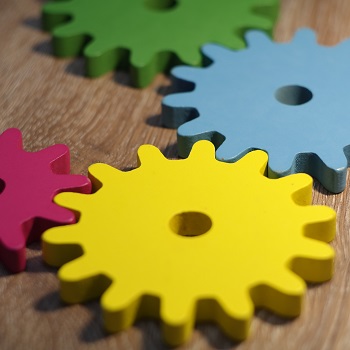Procedures for saving the planet
An internal medicine team redesigned their procedure cart and halved the waste produced by bedside procedures.
Background
It was watching unused metal instruments go straight from the procedure cart into the trash that first got medicine attending Mathilde Gaudreau-Simard, MD, thinking about waste. “The metal instruments that we use weren't being autoclaved. The surgical ones are, but it has to be a special level of metal for the hospital to find that it economically makes sense to autoclave, and so the ones that we use for the bedside were not,” she said.

At the same time, internal medicine residents were struggling to find all the supplies they thought they might need before a bedside procedure. “People were having to go all over the hospital to get different supplies, and we found that a lot of people were gathering extra supplies, just in case they couldn't find the right one,” said Alice Yu, MD, a third-year resident at the hospital.
Those tools brought along just in case added to the waste created by a procedure, she noted. “As soon as you bring all the supplies into the room, they're considered to be contaminated, even if they're not open.”
The Ottawa internal medicine physicians decided it was time to rethink their procedure supplies, with a goal of reducing the waste produced by at least 50%.
How it works
They started the project by looking at what other proceduralists in the hospital did. “We went to interventional radiology to observe what they used and then we went to interventional respirology to see what they used,” said Dr. Gaudreau-Simard. The palliative care team, which does paracentesis during home visits, proved particularly informative. “Because they have to transport it to the patient's home, they had really minimized the amount of supplies that they use.”
The team also researched best practices for procedures and found that there were lists available of the supplies recommended for various bedside procedures, so they used them to develop a locally appropriate list and disseminated it. “A lot of the residents who are doing the procedures are more junior residents,” said Dr. Yu. “Their first couple of times of doing it, they aren't really as familiar with supplies, and so having that checklist and knowing what they need was really helpful. We had also made a video for them to watch, so that they knew how to use the supplies.”
The team worked with nursing administration to make sure that the procedure cart would be restocked with all the necessary supplies, and only those supplies. An additional change was made in the philosophy of procedure prep, from “just in case” to “just in time.” Dr. Gaudreau-Simard explained: “If you think you need something extra, just leave it outside the room, and then at least you can reuse it if it doesn't touch the patient environment.”
Results
To assess the effects of the project, the team measured the waste from 10 procedures performed before the intervention and 10 after (all paracenteses and thoracenteses) and found that they hit their goal of a greater than 50% decrease. The preintervention procedures wasted an average of 25 supplies each; that went down to eight under the new system. The average weight of procedure waste dropped from 485.0 g to 325.3 g, according to results published by the Journal of General Internal Medicine on Sept. 16.
“We were quite happy,” said Dr. Yu. The focus on the procedure supplies also ended up providing extra education for trainees about issues of safety and infection control, added Dr. Gaudreau-Simard. “There were a lot of co-benefits which I don't think we realized going in,” she said.
Challenges
The project also met unexpected challenges, including the physicians having to get an education about hospital supply processes. “We don't see that side of things, and so we would have an idea and be really excited about it, and then talk to people that would say, ‘Well, logistically, these are the problems,’” said Dr. Yu. The team originally thought they could get the hospital to order some different tools, for example, but ended up having to work with the supplies already available.
As another example, they initially wanted to eliminate negative pressure bottles in procedures as part of the project. “We said, ‘Why don't we just put a Foley bag?’” said Dr. Gaudreau-Simard. “Nursing was not on board with that at all, and so we took that out of our intervention and said, ‘Maybe at a later date.’”
Lessons learned
The importance of working with other disciplines and existing system priorities when trying to make changes in the hospital was one of the key lessons of this project. “Every hospital has a [quality improvement] infrastructure,” said Dr. Gaudreau-Simard. “You can use those frameworks to implement these kinds of projects, and things that are environmentally sustainable are also usually economically sustainable.”
Next steps
The project's success has attracted interest from other physicians, both in other hospitals and in other specialties at the team's hospital. “We've talked a lot to emergency physicians about some of the procedures they do, so now they're doing a project to minimize the waste with their suture kits,” said Dr. Gaudreau-Simard.
Words of wisdom
Procedures are only one of many areas where hospitalists can work to reduce waste and protect the environment, Dr. Yu noted. “There's a lot of small changes that we can make every day when we're working in a hospital that can over time make a difference. It's not just procedures, it's also being really mindful of the tests that you're ordering … Recognizing that while climate change is impacting our patients and we want to take care of them, the health care system itself is part of the problem.”
[Choosing Wisely Canada offers recommendations on how different medical specialties can provide high-value care and fight climate change at the same time, noted Dr. Gaudreau-Simard, who led the development of the list for internal medicine.]



